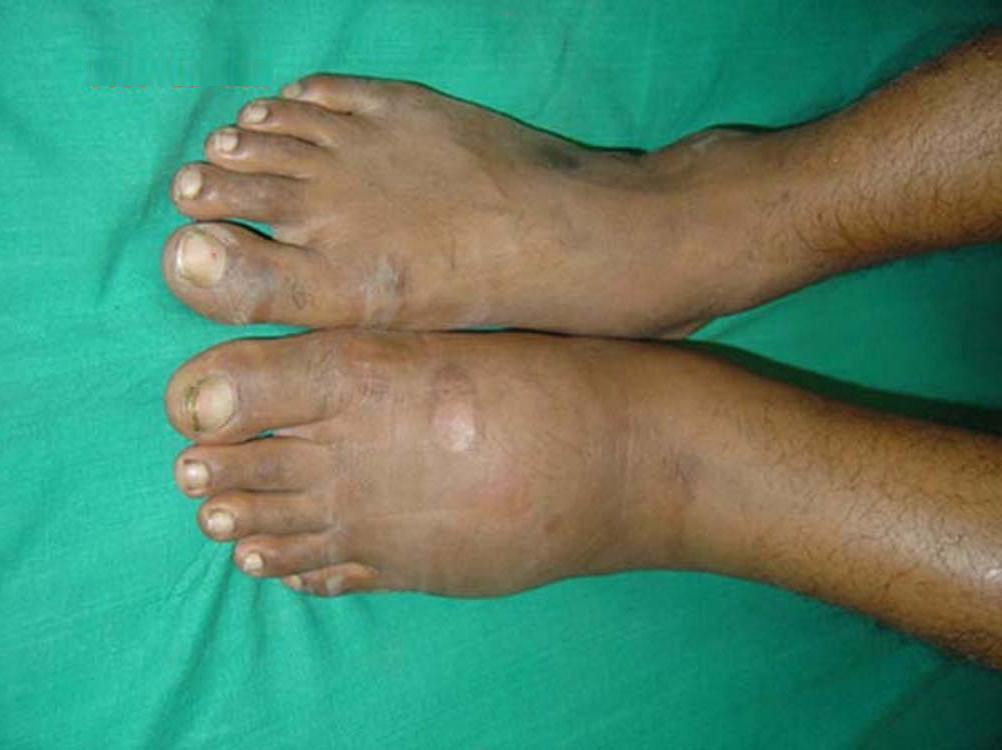Over time, uncontrolled diabetes can affect the muscles and skeleton, leading to joint pain, nerve damage, and other symptoms.
Also, according to the Arthritis Foundation, people with diabetes are almost twice as likely to develop arthritis.
Keep reading for more information about the links between diabetes, arthritis, and joint pain. We also describe telltale symptoms and the range of treatments.
How does diabetes cause joint pain?

Diabetes may cause joint pain by damaging nerves.
Diabetes is a chronic condition characterized by problems with insulin and blood sugar, also known as blood glucose. Insulin is a hormone that delivers blood glucose into the body’s cells.
If a person has high blood glucose levels too often, and they do not receive treatment, it can lead to a range of health conditions.
Type 1 diabetes is an autoimmune condition. It occurs when the pancreas does not produce insulin. Type 2 diabetes is an acquired condition. It causes the body to produce less insulin, and the hormone does not function effectively.
Below, we describe some ways that diabetes can cause joint pain.
Musculoskeletal problems
Over time, if a person does not receive effective treatment, diabetes can lead to the breakdown of the musculoskeletal system. This can involve joint damage and a limited range of joint movement.
Diabetes can also cause changes in nerves and small blood vessels. As a result, hand abnormalities are very common among people with the condition.
Certain joints conditions tend to develop in people with type 1 or type 2 diabetes. The joint problems often correlate with the duration and control of diabetes.
These conditions include:
Some people with diabetes develop thickness of the skin on the fingers along with decreased mobility in the joint.
People may also experience shoulder pain, due to frozen shoulder or rotator cuff tendinitis.
When the joints are damaged, the cushioning no longer works as effectively. As a result, the bones can rub together, causing inflammation, stiffness, and pain. A person may experience limited joint mobility.
Charcot’s joint

A persons with Charcot’s joint may experience redness or swelling in the feet.
Image credit: J. Terrence Jose Jerome, 2008
Charcot’s joint, also called neuropathic arthropathy, results from nerve damage caused by diabetes. The medical term for diabetes-related nerve damage is diabetic neuropathy.
Diabetic neuropathy can cause numbness in the extremities, such as the feet and ankles. Over time, a person may come to feel little or no sensation in these areas. It can be easier to twist or break a foot, for example, without realizing the extent of the damage.
Small breaks and sprains can put pressure on the joints of the foot. Decreased blood supply and mechanical factors contribute, over time, to joint damage and physical deformities.
In some cases, a person may be able to help prevent this damage.
The following are some warning signs of Charcot’s joint:
- redness or swelling
- numbness
- pain in the joints
- areas that feel hot to the touch
- changes in the appearance of the feet
If Charcot’s joint, or neuropathic arthropathy, is causing pain, avoid using the affected foot until it heals.
If the feet are numb, consider using additional support, such as orthotics. Doctors usually treat Charcot’s joint with a cast.
Links with arthritis
People with diabetes are almost twice as likely to develop arthritis. However, the risk of arthritis may differ, depending on whether a person has type 1 or type 2 diabetes.
Rheumatoid arthritis and type 1 diabetes
Both rheumatoid arthritis (RA) and type 1 diabetes are autoimmune disorders. This means that, in both cases, the immune system is attacking an otherwise healthy part of the body.
In a person with RA, the immune system attacks tissues in the joints, causing swelling, pain, and deformities.
In a person with type 1 diabetes, the immune system attacks the pancreas, stopping the production of insulin.
Both RA and type 1 diabetes involve inflammation, and certain clinical signs of inflammation — including C-reactive protein and interleukin-6 levels — are consistently high in people who have either condition.
Having one autoimmune condition can increase the risk of developing a second. This helps explain why type 1 diabetes and RA can coexist.
Osteoarthritis and type 2 diabetes
Unlike type 1 diabetes, type 2 is strongly associated with excess body weight. Being overweight or having obesity also increases a person’s risk of developing osteoarthritis (OA), as the weight puts extra stress on the joints, particularly in the lower body.
A person can reduce their risk of developing type 2 diabetes and OA by maintaining a healthy weight, through a healthful diet and regular exercise.
If a person has either condition, or both, reaching and maintaining a healthy weight can improve their symptoms. According to the Arthritis Foundation, losing 15 pounds can significantly improve the level of knee pain in a person with OA, for example.
Also, in a person with type 2 diabetes, losing 5–10% of their total body weight can reduce their blood sugar levels significantly. As a result, they may need to take less medication for the condition.
Treatment and management
Taking over-the-counter anti-inflammatory medications, such as ibuprofen, can often reduce pain and swelling in the joints. Speak to a doctor about how much ibuprofen is too much in the short and long terms.
If joint pain and other symptoms persist, discuss treatment options with a doctor. Some people benefit from braces, orthotics, adjustments to their lifestyle or medication, or a combination.
Type 1 and type 2 diabetes have different causes and treatments. People with type 1 diabetes usually need to take forms of insulin to control their blood sugar levels.
People with type 2 diabetes may also require insulin. Often, they only need to take medication that improves the response of their insulin to blood sugar.
People with either type of diabetes benefit from maintaining a healthful diet and level of exercise. Reaching and maintaining a healthy weight has additional benefits for people with type 2 diabetes.
Receiving treatment early can help a person avoid long term diabetes complications, such as joint damage and malformations.
Prediabetes and joint pain

Maintaining a healthy weight through a healthful diet may reduce the chance of developing type 2 diabetes.
Having excess weight puts a person at risk of both prediabetes and joint pain.
The weight can lead to higher levels of blood sugar, and the pancreas may be unable to produce enough insulin to keep up. This can cause a person to develop type 2 diabetes.
Carrying extra weight also puts stress on the joints, particularly in the lower body.
To reduce the risk of developing type 2 diabetes and to limit stress on the joints, a person should maintain a healthy weight. Often, a person can do this by exercising regularly and eating a healthful diet, full of whole grains, vegetables, fruits, and lean proteins.
Summary
When a person does not receive effective treatment, diabetes can cause joint pain.
The pain can result from the effects of diabetes on the musculoskeletal or nervous systems. Joint pain can also occur if diabetes is causing arthritis, such as RA or OA.
In some people, over-the-counter pain relievers and anti-inflammatory medications are enough to reduce joint pain. Others may need additional treatment.
Eating a healthful diet, getting regular exercise, and maintaining a healthy weight can help improve symptoms and prevent complications.
